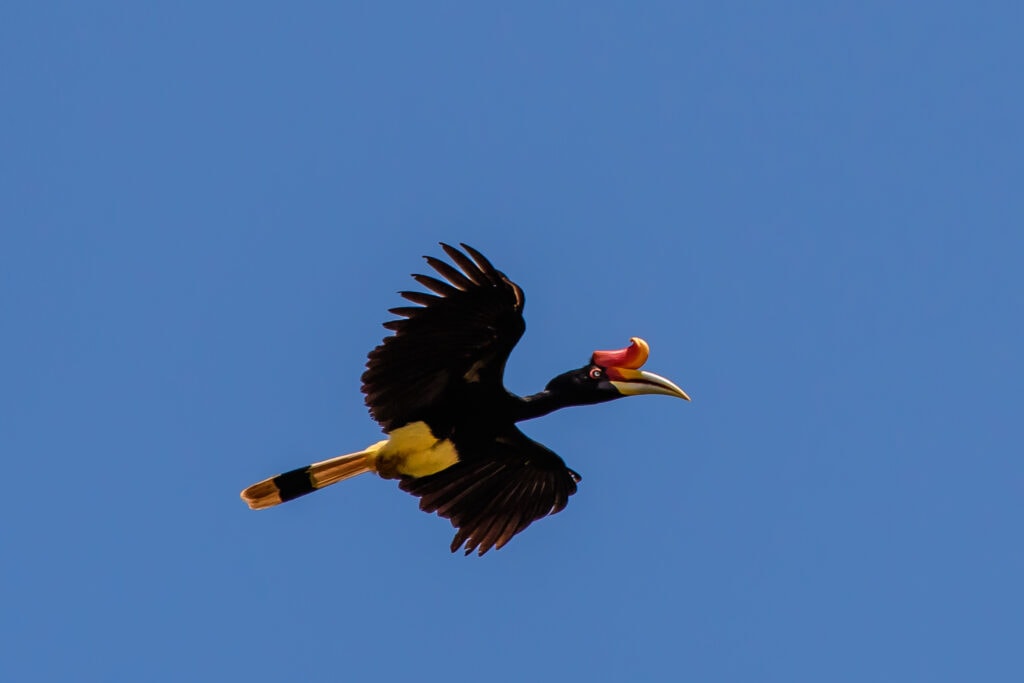With a name like “Rhinoceros Hornbill” you’re probably expecting a large flamboyant bird with a lot of personality. Well don’t worry! The Rhinoceros Hornbill does not disappoint. This large and colorful bird embodies every ounce of the personality that its name implies.
Rhinoceros Hornbills are large tree-dwelling birds found in the rainforests of Southeast Asia. They can reach lengths of up to three feet and are named for their large and impressive bill which features a large casque or “horn.”
The Rhinoceros Hornbill is the national bird of Malaysia and holds particular cultural importance in Borneo, where some mythological traditions designate it as the supreme chief of the earth’s birds.
Related Article: The 2023 Christmas Bird Count is Coming: Here’s How You Can Participate
Fun Facts About the Rhinoceros Hornbill
The Rhinoceros Hornbill’s unique appearance is certainly impressive, but looks aren’t the only thing that’s special about them. Let’s dive into some Rhinoceros Hornbill fun facts to learn about this show-stopping rainforest bird.
A love that delivers: For a Rhinoceros Hornbill, romance is very serious business. When a pair of Rhinoceros Hornbills breed, they build a nest in a hollow tree. Then, both parents use mud, feces, and other debris to build a wall. The pair seals the nest shut, walling it off completely, with the female still inside. The wall includes a small opening just large enough for the male to pass food to the female. Once she is walled inside, the female incubates her eggs and begins rearing the young chicks. During this time, she is completely reliant on the male for food and will not leave the walled off nest. This requires a lot of trust, and Rhinoceros Hornbills mate for life and form deep partnerships as a result.
Breaking out: After several months of incubating, the female Rhinoceros Hornbill breaks down the wall and leaves the nest. At this stage, the chicks are still too young to leave the nest. So, both parents wall the chicks’ inside yet again until they are old enough to fledge. This time, the mother Rhinoceros Hornbill stays outside and can help feed the growing chicks.
Hornbill hygiene: Being sealed in a dark and tiny nest cavity by a wall of mud and feces for several months might not sound appealing to you, but female Rhinoceros Hornbills do still have hygiene standards. The opening in the nest through which the male provides food is also used as a restroom so that the female does not end up sealed inside with her own waste. This also helps the chicks stay healthy and prevents diseases from spreading in close quarters.
The Future of the Rhinoceros Hornbill
The International Union for the Conservation of Nature’s “Red List of Threatened Species” lists the Rhinoceros Hornbill as “Vulnerable.” The list also notes that global Rhinoceros Hornbill populations are decreasing.
Major threats to the Rhinoceros Hornbill include logging, as the Rhinoceros Hornbill is highly dependent on large mature rainforest trees for nesting, and hunting. Rhinoceros Hornbills have historically been hunted for both meat and traditional medicine.
Popular Article: Species Spotlight: The Hermit Thrush

